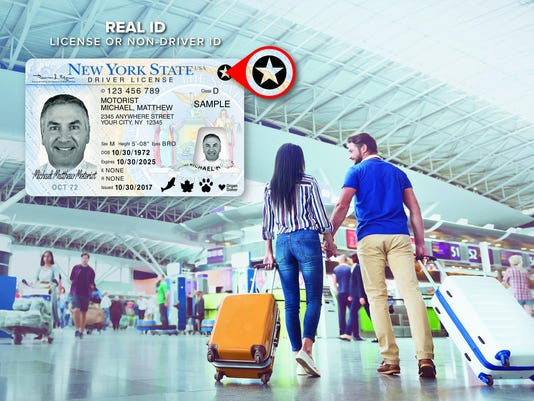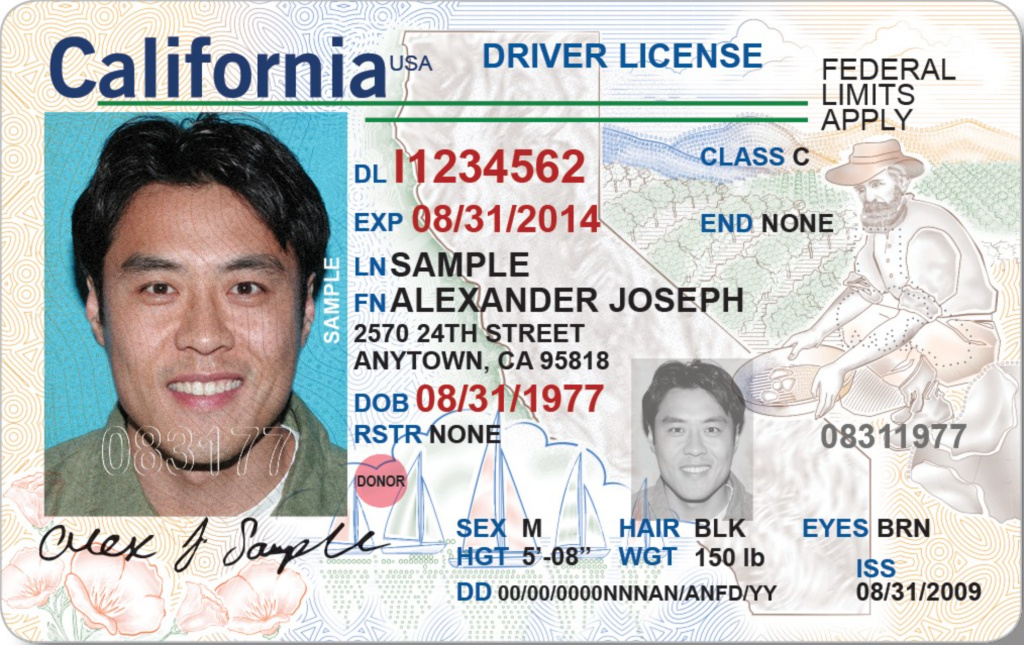Drivers Liscense For Flying
Updated 10/4/2017 As if traveling wasn’t already complicated enough, a federal mandate is imposing new requirements on state driver’s licenses and ID cards for use in air travel. Why there’s so much confusion about REAL ID and PA driver’s licenses at airports Millions of Pennsylvanians are expected to have invalid licenses in 2020. DHS.gov/Flickr via Frankieleon. You can, however, use an EID when flying domestically for boarding planes. States Offering an Enhanced Drivers License (EDL) The following US states currently offer EDLs: Michigan; New York; Vermont; Washington; Applying for an Enhanced Driver License. Applying for an enhanced driver license or enhanced ID is on a voluntary basis.

Maybe you’ve seen news reports about changes to identification laws for boarding a domestic flight. And maybe you’ve been confused by those reports — with their mentions of deadlines, extensions and fuzzy state-by-state decisions.
That’s because, well, it’s confusing. And changing all the time. Here’s what you need to know before you hop on a plane in 2018:
Starting Jan. 22, travelers from a handful of states may not be able to use their current licenses to board domestic flights
As of this writing, those states are Louisiana, Michigan and New York — but negotiations are ongoing to grant those states compliance or an extension, so don’t panic yet
States that have been granted extensions have until Oct. 1, 2018, to meet federal requirements on what is called a “Real ID”
If you live in a compliant state, you don’t have to rush out and get a new license before you fly; you can wait until you must renew your license, or October 2020, whichever comes first.
Want to play it safe? If you have a passport, bring it along if you fly after Jan. 22.
Wait, back up. Why is this happening?
The Real ID Act, passed in 2005, requires states to meet higher security standards in how they process applications for licenses and identification cards, as well as how they design and issue the cards.

Implementing the act has been tricky. That’s in part because the federal government set the standards, but it’s the state governments that must meet them. The Department of Homeland Security has been enforcing the act in phases. Tracking those phases and deadlines — and, in many cases, extensions — can get confusing.
The next significant deadline is Jan. 22. After that, licenses from states that haven’t met these standards or been given an extension to do so may not be accepted by federal agencies, such as the Transportation Security Administration.
You don't need one of these standardized licenses to drive. And you can always use a passport or one of these other forms of identification to pass through TSA. But if you rely on a license for air travel, you eventually need a Real ID to board airplanes.
“
Want to play it safe? If you have a passport, bring it along if you fly after Jan. 22.”
If you do use your driver’s license to board domestic flights, check this DHS map to see whether your state is compliant with the Real ID Act; has an extension for Real ID enforcement; or is under review. Here’s what each of those terms means for you:
Driver S License For Flying
If your state is compliant: You can use the license in your wallet to board domestic flights until the ID expires or until Oct. 1, 2020, whichever comes first.
If your state has been granted an extension: Homeland Security may grant an extension to states that aren’t compliant but that have “demonstrated that they’re on their way to compliance,” says Justine Whelan, assistant press secretary at the DHS.
If you live in one of these states, you can keep using your driver’s license to board domestic flights until Oct. 1, 2018. If your state doesn’t become compliant or receive another extension by then, the TSA may not continue to accept your license.
» MORE:When is the best time to buy airline tickets?
Note that Homeland Security may renew an extension if, according to the DHS website, “the state has provided adequate justification for continued noncompliance.” If the extension expires without renewal, the DHS may grant a short grace period before licenses are no longer accepted.
If your state is under review: Right now, Homeland Security is deciding to either grant these states another extension or confirm their compliance. The department has until Jan. 22 to do so. After that date, the TSA may not accept noncompliant licenses from those states.
But the situation won’t necessarily come to that. For example, although Michigan is currently “under review” on the DHS map, Fred Woodhams, a spokesperson from the Michigan Department of State, expects the state to be fully compliant or get another extension before Jan. 22. Representatives from other “under review” states expect they’ll get the signoff for compliance or an extension before the upcoming deadline, too.
“
States have planned accordingly for these upcoming changes for years.”
Justine Whelan, U.S. Department of Homeland Security spokespersonIf you live in a state that’s being reviewed, visit the website of whichever branch of state government oversees motor vehicles. (Names vary from “department” to “office” to “bureau” of motor vehicles across states.) Search those sites for Real ID information, and you’ll likely find that Jan. 22 will come and go without disrupting your travel plans too much. For example, the New York Department of Motor Vehicles offers this resource for residents.
The federal and state governments have been rolling out the Real ID Act for years, so compliance deadlines “are a surprise to no one,” Whelan says. “States have planned accordingly for these upcoming changes for years.” The best thing you can do now is to pay attention, she says. Visit the website of the state branch that oversees motor vehicles to see whether you should take any steps to renew your license.
If you live in a state that’s “under review” and want to be extra safe, bring your passport (or consider applying for one) to ensure smooth travels going forward.
In the past several months, there has been plenty of conversation about the Real ID Act and how it will affect air travelers. Passed by Congress in 2005, the act is intended to prevent identity fraud, and starting on Jan. 22, 2018, fliers who reside in some states, even if they’re flying domestically, will need identification other than a driver’s license to pass through Transportation Security Administration security checkpoints at airports.
Who exactly is affected and what additional identification will the T.S.A. require? Here, answers to questions about what the Real ID Act means for travelers and why having a passport now may be more important than ever.
What exactly is the Real ID Act?
The act is meant to ensure that a person presenting an ID is in fact who that person says they are, according to Justine Whelan, a spokeswoman for the Department of Homeland Security.
“The act prevents the production of fake IDs and ensures that all identification that is used has certain features which prevent tampering or are difficult to replicate,” Ms. Whelan said. These features include anti-counterfeit technology, such as the holograms on some state licenses. Federally issued documents, such as a passport, also fall into the difficult-to-replicate category.
Why is the act being implemented?
California Driver's License For Flying
Congress passed the act on the recommendation of the 9/11 Commission that the federal government set minimum security standards for how states issue identification and for how that identification is used. “These security standards ensure a safer American public. At the end of the day, everyone should be who they say they are,” Ms. Whelan said.
When does it go into effect and for which states?
Ms. Whelan said that Real ID enforcement has been implemented in phases over the last two years in some states. If you show up to a federal facility such as a military base, for example, and you live in a state that’s not Real ID compliant, you will need alternative identification to a driver’s license. Currently, 28 states are Real ID compliant, including Texas, Ohio, Florida, Nevada and Colorado. For a complete list, visit dhs.gov/real-id.
But what does the Real ID Act mean for air travelers?
Starting Jan. 22, 2018, the T.S.A. will ask all travelers who don’t have a driver’s license from a compliant state or a state that has been granted an extension to the compliance deadline (this means that residents can continue using their noncompliant license for federal purposes while the state continues working to be in compliance) to provide an alternative form of acceptable identification. Travelers won’t be able to pass through security without this acceptable identification.
And, as of Oct. 1, 2020, all air travelers will be required to have a Real ID-compliant driver’s license or alternate acceptable identification to fly domestically.
What exactly qualifies as acceptable identification?
The D.H.S. has designated more than a dozen forms of acceptable ID including a passport; a border ID card; a trusted traveler card, such as Global Entry; a Real ID compliant driver’s license; and a permanent resident card. For a complete list, visit tsa.gov/travel/security-screening/identification.
Is one form of acceptable identification better than another?
Ms. Whelan said that the D.H.S. does not advocate any particular form of acceptable identification, but Brenda Sprague, who oversees passport services for the U.S. Department of State, said that, with the implementation of Real ID fast approaching, residents who live in states that aren’t Real ID compliant should apply for a passport before the end of the year.
November and December are the best months to apply for or renew your current passport, Ms. Sprague said, because the turnaround time to get a new passport now is usually around four weeks. In the summer, when passport applications peak, the wait for a new passport could be up to eight weeks.

Around 136 million Americans have passports in circulation, according to State Department — that’s only around 40 percent of the population in the United States.
O.K., you’ve convinced me, and I’m ready to apply for a new passport. What’s the best way?
Ms. Sprague said that there are more than 8,000 passport application locations around the country. Around 60 percent are post offices while the rest are courthouses and libraries. Visit the Department of State’s Where to Apply link for more details. In addition, there are 27 passport agencies, where travelers can apply for rush passports. “These agencies are for people who are traveling within two weeks,” Ms. Sprague said.
This link has a list of these agencies; applicants need an appointment for a visit and can make one online at passportappointment.travel.state.gov.
Also, the State Department is collaborating with Hilton Hotels & Resorts on the Hilton Passport Project, an initiative meant to encourage more Americans to apply for passports. Every few weeks, a Hilton location in the United States will have a Passport Concierge booth, where guests and the general public can have their passport pictures taken for free and apply for or renew a passport. Between one and three employees from the State Department will be on hand to answer passport-related questions and help fill out applications. The next Passport Concierge will be at Hilton Cleveland Downtown from Nov. 9 to 11. For a list of coming locations, visit facebook.com/Hilton.
How much does it cost to get a new passport?
First-time applicants pay $110 plus a $25 application fee. Passport renewals cost $110 and expedited passports are an additional $60. If you’re renewing your passport, you can do it by mail, but if you’re getting a new passport or if your existing one is lost or stolen, you must apply in person.